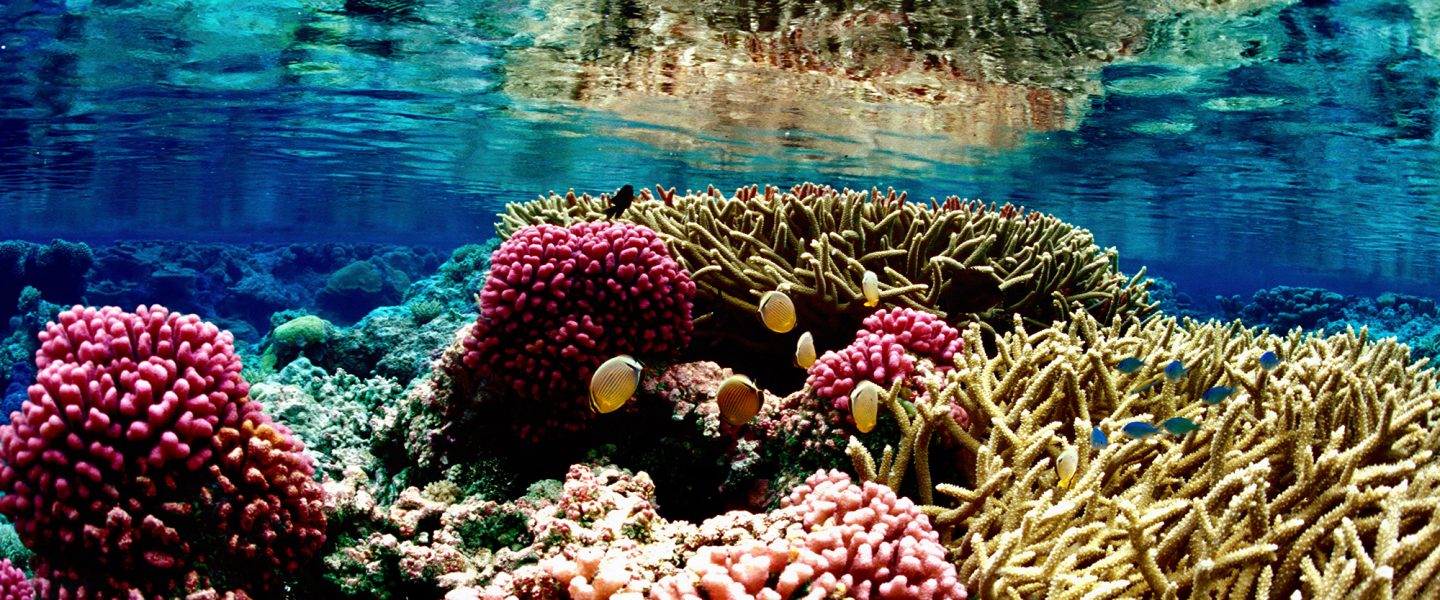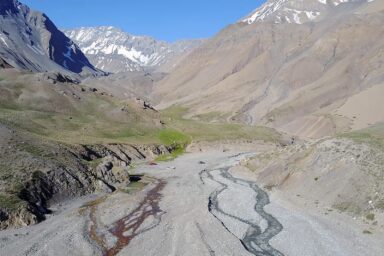Assisted migration may help declining coral ecosystems.
|
Listen To This Story
|
Known as the architects of the sea, coral creates the foundational layer that supports an abundance of biodiversity. Although occupying less than 1 percent of the ocean floor, coral reefs contain over 25 percent of all marine life, provide jobs and vital food sources to millions, and safeguard coastlines from storms and erosion.
Despite their importance, coral reefs are declining at a devastating rate. Climate change, overfishing, declining water quality, pollution, and adverse coastal development are all jeopardizing the future of these underwater worlds. An estimated 14 percent of the world’s coral has been lost since 2009, and we are projected to lose up to 90 percent of coral by 2050 unless drastic action is taken to limit global warming.
“Coral reefs support a quarter of the world’s marine biodiversity which in turn supports people with food, income, and protection,” says Edith Mertz, who recently completed a doctorate in global environmental studies at Sophia University, Japan. “Corals are an essential part of the marine environment, and losing them will have major economic and social consequences for many countries.”
To protect coral, marine biologists and conservationists are pushing globally for coral restoration projects. These projects seek to return coral to previously denuded or impacted areas, aiming to repopulate the reefs with coral and marine life. The problem with returning the same species of coral to an area where it has previously died is that without mitigating the cause of its death, at some point, it will face the same eventuality.
That’s where assisted migration comes in. Assisted migration involves moving a species in response to climate change when they are unable to move or adapt fast enough on their own. Assisted migration for some species has received growing interest over the years; however, little information is available on whether it is a viable option for coral reefs.
“Assisted migration is a very new field, it’s a very new topic, and even though there has been a lot of discussion about the ethics involved, very little assisted migrations have actually been done,” Mertz says. Mertz’s thesis, Expert Opinions on Assisted Migration and Ecosystem Pushing in Coral Reefs, is one of the few papers investigating the possibility of assisted migration for coral. “I think assisted migration is something we could do in certain places to save coral for the future, but we have to be realistic about it.”
Assisted migration remains controversial among conservation scientists, mainly due to the ethical considerations associated with moving species into different ecosystems and the increased risk of introducing disease or invasive species. Critics warn that species can carry pathogens or parasites into new environments, harming native populations, or even change genetic diversity.
Mertz, however, believes coral migration presents an opportunity.

“When it comes to disease and invasion, there is little risk from the coral itself due to coral being so specific and slow growing in an environment,” Mertz says. “The worry lies with the microorganisms that come with the coral, but this could be controlled by imposing quarantine measures and screening procedures.” By growing species of coral in a captive aquaculture system, for example, scientists can control disease and invasive species.
Still, when it comes to assisted migration, maintaining realistic expectations is essential. Assisted migration cannot solve the problem of coral reef decline, or create new ecosystems, but it could help preserve and save certain species, so that ecosystems can develop in the future. “We can try to recreate the basis of the ecosystem to a point where the rest of it can take over, but that would take a really long time, around 100 years at least,” Mertz says.
Coral reefs take hundreds of years to develop, due to the slow growth rate of coral, which grow on average 0.5 cm (~.2 in) to 2 cm (~.8 in) per year. If assisted migration were attempted, the funders of such endeavors would need to have an understanding of the timeframe and longevity of the project, Mertz says. “To efficiently fund these projects, funders need to be educated about the needs of coral; otherwise, people will only focus on fast-growing coral.”
One company that has provided some evidence for assisted migration for coral is Hong Kong-based Archireef, which is restoring degraded marine ecosystems through the implementation of its 3D-printed terracotta tiles. These tiles provide the foundations for coral to survive. In its most recent project in Hoi Ha Wan Marine Park, Archireef found that by deploying the tiles deeper in the water, its coral was less susceptible to the effects of UV damage and heatwaves and had higher survival rates than coral in the shallower water, which experienced widespread bleaching.
“Deeper waters tend to be more stable in temperature and are cooler,” says David Baker, chief scientist at Archireef. “It’s often the case that there aren’t corals in deeper water simply because there’s nowhere for them to grow. Corals can’t grow on sand, and so that’s where Archireef comes in. We create a new foundation for coral reefs and place the tiles wherever we think they can survive. Deeper water has efficient light and resources, it’s just that coral don’t have the hard bottom to attach to.”
Archireef’s solution to coral reef placement, though just in the beginning phase, indicates the possibilities of assisted migration for coral. Both Baker and Mertz say that assisted migration is meanwhile limited to countries that span the tropical to temperate climate continuum, providing the right conditions for coral to survive and include the natural flow of succession. Baker suggested China, Japan, and Australia, and Mertz suggested Japan, South Africa, and the Philippines. However, the feasibility of these places remains unknown.
Finally, if assisted migration is used to promote coral survival, governments and policymakers need to understand the needs of coral and be more open-minded about translocating species, especially as the world adapts to climate change.
“The reason that you’re not finding assisted migration in the literature is because it’s a very thorny issue, especially when you’re crossing borders of any kind,” Baker says. “But if we don’t do something, then we’re going to lose things very, very quickly.”
Assisted migration may not save all of the planet’s coral ecosystems, but it could play a vital role in saving some coral, promoting its survival, and encouraging coral reef development. For assisted migration to work, it needs the support of funders, governments, and policymakers who are educated about coral needs and expectations. It also needs feasible locations with the right conditions to be identified, with quarantine measures in place to control disease and invasive species.
“There needs to be bold engagement with the idea of assisted migration,” Baker says, “because if we want to help coral reefs persist into the future, we’re going to have to think about salvaging species and getting them into places where they will survive.”
This story by Scarlett Buckley was originally published by Earth Island Journal and is part of Covering Climate Now, a global journalism collaboration strengthening coverage of the climate story.





